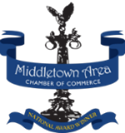Growth is rarely linear, and for businesses, it’s never a one-size-fits-all process. From first-time founders to seasoned operators scaling beyond their initial success, every stage of a business brings new questions, challenges, and opportunities. What works for a fledgling venture just trying to make its first sale won’t hold up for a team of thirty looking to expand into new markets. Timing, market signals, and internal capacity play defining roles in shaping the right growth strategy. The key is understanding where a business stands—and then tailoring the path forward with intention, flexibility, and grit.
Starting at Zero: Proof of Concept Over Perfection
In the earliest days, the objective isn't to build something flawless—it’s to build something that works for someone. Businesses that survive the idea stage usually do so because they quickly validated a real need and managed to get early buy-in from a customer segment, however small. Lean tactics rule this phase: testing, iterating, and getting feedback matters more than polishing a pitch deck or launching a grand website. It’s about movement and responsiveness, about finding that one thread of demand and tugging until it unravels into something scalable.
Early Traction: Let Word of Mouth Work Harder
Once a business has found a few paying customers and the wheels are turning, the next challenge is turning early momentum into reliable traction. At this stage, personal relationships and direct outreach often outperform ad budgets or paid funnels. Satisfied customers become evangelists if they’re treated with intention and authenticity. Businesses that listen well and solve problems with uncommon diligence often find that referrals grow organically—and cheaply. Formalizing feedback loops and tracking patterns in customer behavior can reveal surprising insights into what people are truly buying, which often differs from what was initially sold.
Paper Trails and Peace of Mind: Keeping Records Straight
Staying on top of your business and financial records isn’t just about bookkeeping—it’s about having clarity when decisions need to be made fast, and organized documentation gives you the upper hand. Saving files as PDFs ensures consistent formatting and preserves the integrity of original documents across devices and systems. And when edits are needed, a PDF editor allows you to make changes to documents without converting them to another format, keeping everything streamlined and frustration-free. If searching through endless folders has become the norm, here’s a solution that keeps everything at your fingertips.
Geographic and Vertical Expansion: Entering New Arenas
Once a business has nailed its home base, the temptation is often to replicate that success elsewhere. Expansion—into new geographies, verticals, or offerings—requires a calibrated approach. The businesses that do this well take time to localize, rather than replicate. They research new audiences as if they were starting from scratch and treat assumptions with suspicion. Sometimes, a product that sings in one city flops in another not because it’s bad, but because the audience has different pain points. Those who succeed here usually blend ambition with patience.
Digital Infrastructure: Growth Through Systems, Not Just Sales
Scaling often gets talked about in terms of headcount or revenue, but one of the most durable forms of growth comes from infrastructure. Automating parts of the business—whether it’s customer onboarding, fulfillment, or reporting—creates bandwidth that can be reinvested into more strategic efforts. Companies that build strong internal systems end up spending less energy on fire drills and more on value creation. Sometimes the most transformative growth move is upgrading the software stack or finally building that dashboard the team keeps talking about but never prioritizes.
Mature Stage: Reinvention Before Stagnation
Even businesses that feel stable aren’t immune to stagnation. Long-standing success can create blind spots, and market shifts rarely announce themselves. That’s why some of the most forward-thinking companies are the ones constantly poking at their own playbook. They revisit what customers need now—not five years ago—and explore adjacent services or products that align with their core strengths. Internal innovation teams, skunkworks projects, or even temporary cannibalization can give established businesses new lifelines. When reinvention is treated as part of the growth strategy—not a last-ditch effort—staying relevant becomes a habit, not a scramble.
What drives growth at one stage might backfire at another. Business evolution isn’t just about adding more—it’s about understanding what to add, when to add it, and what to strip away. The best operators aren’t just chasing numbers; they’re watching patterns, asking hard questions, and adjusting course with care. Growth, after all, isn’t a single event or milestone—it’s an ongoing negotiation between ambition and reality. And it’s often the businesses that grow with grace, not just speed, that end up building something worth keeping.
Discover how the Middletown Area Chamber of Commerce can elevate your business and enrich our community—join us today and be part of the vibrant MOT region!
This Hot Deal is promoted by MIDDLETOWN AREA CHAMBER OF COMMERCE.

